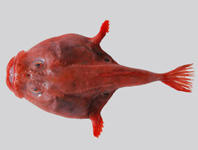Abstract
Five new species of bitentaculate Cirratulidae belonging to the genus Aphelochaeta are herein described from the Pacific coast of Costa Rica, all from shallow subtidal depths. Aphelochaeta antelonga sp. nov. is characterized by a long biannulate peristomium and fibrillated capillary setae and is from 11–18 m in the Gulf of Nicoya. Aphelochaeta guimondi sp. nov., with a wide dorsal trough in the thorax and hirsute capillaries (visible using SEM), is described from 11–26 m in the Gulf of Nicoya. Aphelochaeta praeacuta sp. nov., with its first peristomial annulation extending as a dorsal crest over the second annulation and first setiger, was collected from 11–28 m in Bahia Culebra. Aphelochaeta striata sp. nov., collected from 11–28 m in the Gulf of Nicoya, is recognized by its narrow body and the transverse blue stripes across the venter of setigers 5–8 produced with methyl green stain. Aphelochaeta zebra sp. nov., collected from a coral reef in Golfo Dulce, is characterized by its expanded posterior end and the darkly staining intersegmental regions using methyl green stain. Additionally, A. glandaria Blake, 1996, a species reportedly with a widespread geographic distribution (Blake, 1996), was also encountered subtidally from the Gulf of Nicoya and Golfo Dulce.
References
Blake, J.A. (1991) Revision of some genera and species of Cirratulidae (Polychaeta) from the western North Atlantic. Ophelia Supplement, 5, 17–30.
Blake, J.A. (1996) Family Cirratulidae Ryckholdt, 1851 including a revision of the genera and species from the Eastern North Pacific. In: Blake, J.A., Hilbig B. & Scott, P.H. (Eds.), Taxonomic atlas of the benthic fauna of the Santa Maria Basin and western Santa Barbara Channel, Volume 6. The Annelida, Part 3. Santa Barbara Museum of Natural History, Santa Barbara, California, pp. 263–384.
Blake, J.A. (2006) New species and records of deep-water Cirratulidae (Polychaeta) from off Northern California. Scientia Marina, 70S3, 45–57.
Blake, J.A. (2015) New species of Chaetozone and Tharyx (Polychaeta: Cirratulidae) from the Alaskan and Canadian Arctic and the Northeastern Pacific, including a description of the lectotype of Chaetozone setosa Malmgren from the Spitzbergen in the Norwegian Arctic. Zootaxa, 3919 (1), 501–552.
http://dx.doi.org/10.11646/zootaxa.3919.3.5Carrasco, F.D. (1977) Polychaeta (Annelida) de Bahia de Concepción, Chile. Familias Orbiniidae, Cirratulidae, Cossuridae, Capitellidae y Ampharetidae, con la descripción de tres especies y una subspecie nuevas. Boletin de la Sociedad de Biologia de Concepción, 51, 67–92.
Dean, H.K. (1996a) Subtidal benthic polychaetes (Annelida) of the Gulf of Nicoya, Costa Rica. Revista Biologia Tropical, 44 (Suppl. 3), 69–80.
Dean, H.K. (1996b) Polychaete worms (Annelida) collected in Golfo Dulce during the Victor Hensen Costa Rica expedition (1993/1994). Revista Biologia Tropical, 44 (Suppl. 3), 81–86.
Dean, H.K. (2004) Marine biodiversity of Costa Rica: Class Polychaeta (Annelida). Revista Biologia Tropical, 52 (Suppl. 2), 131–181.
Dean, H.K. & Blake, J.A. (2007) Chaetozone and Caulleriella (Polychaeta: Cirratulidae) from the Pacific Coast of Costa Rica, with description of eight new species. Zootaxa, 1451, 41–68.
Dean, H.K. & Blake, J.A. (2009) Monticellina (Polychaeta: Cirratulidae) from the Pacific coast of Costa Rica, with description of six new species. Zoosymposia, 2, 105–126.
Doner, S.A. & Blake, J.A. (2006) New species of Cirratulidae (Polychaeta) from the northeastern United States. Scientia Marina, 70S3 (Suppl. 3), 65-73.
Doner, S.A. & Blake, J.A. (2009) Two new species of Aphelochaeta (Polychaeta: Cirratulidae) from deep-water off Northern California. Zoosymposia, 2, 127–137.
Elías, R. & Rivero, M.S. (2009) Two new species of Cirratulidae (Annelida: Polychaeta) from Mar del Plata, Argentina (SW Atlantic). Zoosymposia, 2, 139–148.
Hartman, O. (1960) Systematic account of some marine invertebrate animals from the deep basins of Southern California. Allan Hancock Pacific Expeditions, 22, 69–215.
Hartmann-Schröder, G. (1965) Die Polychaeten des Sublitorals. In: Hartmann-Schröder, G. & Hartmann, G. Zur Kenntnis des Sublitorals der chilenischen Küste unter besonderer Berücksichtigung der Polychaeten und Ostracoden. Mitteilungen des Hamburgischer Zoologischen Museums und Instituts, 62, 59–305, 300 figs.
Hutchings, P. & Murray, A. (1984) Taxonomy of polychaetes from the Hawkesbury River and the southern estuaries of New South Wales, Australia. Records of the Australian Museum, 36 (Supple. 3), 1–118.
http://dx.doi.org/10.3853/j.0812-7387.3.1984.101Maurer, D. & Vargas, J.A. (1984) Diversity of soft-bottom benthos in a tropical estuary: Gulf of Nicoya, Costa Rica. Marine Biology, 81, 97–106.
http://dx.doi.org/10.1007/BF00397631León-Morales, R. & Vargas, J.A. (1998) Macrofauna of a tropical fjord-like embayment: Golfo Dulce, Costa Rica. Revista Biologia Tropical, 46 (Suppl. 6), 81–90.
Magalhães, W.F. & Bailey-Brock, J.H. (2013) Bitentaculate Cirratulidae (Annelida: Polychaeta) from the northwestern Pacific Islands with description of nine new species. Zootaxa, 3630 (1), 80–116.
http://dx.doi.org/10.11646/zootaxa.3630.1.3Moore, J.P. (1909) Polychaetous annelids from Monterey Bay and San Diego, California. Proceedings of the Philadelphia Academy of Natural Sciences, 61, 235–295.

